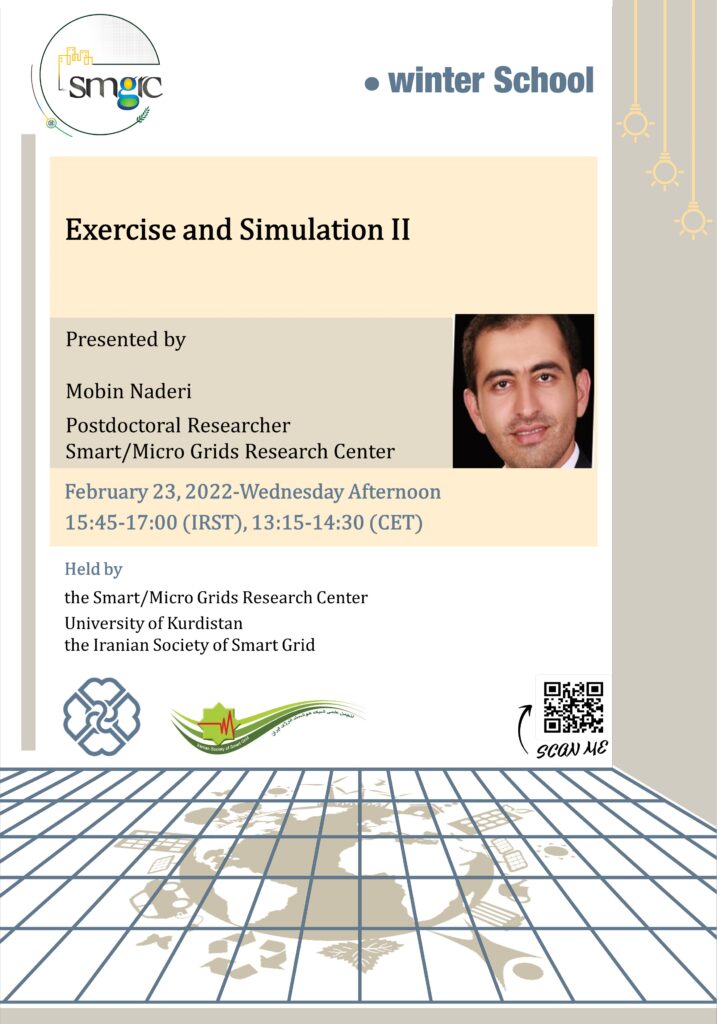
About the Presenter
Mobin Naderi received the B.Sc., M.Sc., and Ph.D. degrees in Electrical Engineering from Tabriz University, Tabriz, Iran, Iran University of Science and Technology, Tehran, Iran, and University of Kurdistan, Sanandaj, Iran, respectively in 2012, 2014, and 2019. He was a Visiting Ph.D. student with the Department of Energy Technology, Aalborg University, Aalborg, Denmark in 2018. He is now a postdoctoral researcher at the University of Kurdistan, Iran. His research interests focus on modeling, stability analysis, and control of autonomous/grid-connected/interconnected microgrids, and robust control methods and applications.
General Information:
This course will be useful for …
The aims of this course are …
Where and how you can use this knowledge?
AC microgrids can be operated in grid-connected or islanded modes. In the islanded microgrids, voltage and frequency should be controlled by all generation units due to the absence of the grid and its control functions. However, the units are not responsible for voltage/frequency control when a microgrid is connected to the main grid. In fact, multiple huge generation units of the main grid control frequency and voltage. Therefore, the main control objective of grid-connected microgrids is power generation control of distributed units. In such microgrids, stability issues do not appear for the control of small generation units due to the presence of large units for voltage/frequency control. Nevertheless, there are some sources of uncertainties and disturbances for grid-connected microgrids including load and filter parameter variations, grid voltage sag/swell/unbalance, and generation side intermittences and disturbances. In such a system, obtaining a degree of robustness against disturbances and uncertainties is necessary.
In this presentation, a dynamic model of the studied grid-connected microgrid is obtained and the stability and robustness of the system against an acceptable range of plant and control parameters are investigated, accordingly. In fact, sensitivity analysis is done for the most important parameters. Common proportional-integral controllers are considered to control the generation unit currents before designing a robust controller for this objective. According to the sensitivity analysis results, synthesizing a robust current controller is recommended. Therefore, load inductive and resistive elements, LC filter inductance, and capacitance are considered as uncertainties. An open-loop model of the microgrid and an unstructured model of the uncertainties are achieved. The H∞ design method is selected to synthesize the robust current controller and three control objectives are considered consisting of reference signal tracking, control signal mitigation, and disturbance attenuation. Finally, the robust synthesis of current controllers of microgrid generation units is fulfilled using applicable functions of the Robust Control Toolbox in MATLAB. The robust current controller is tested for a case study microgrid and is compared with the basic proportional-integral controller, which is tuned for a fair comparison.